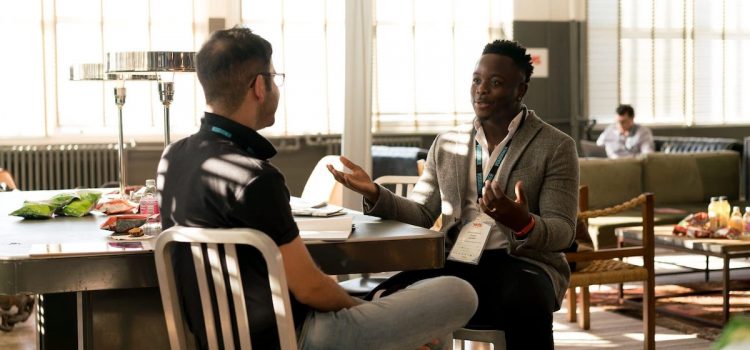

This article is an excerpt from the Shortform book guide to "Oversubscribed" by Daniel Priestley. Shortform has the world's best summaries and analyses of books you should be reading.
Like this article? Sign up for a free trial here.
Where do people often go wrong in sales conversations? When is the right time to have them?
A sales conversation is easy once you’ve created demand and primed the market. Do the groundwork—and the conversation with your prospective buyers is a cinch. In Oversubscribed, Daniel Priestley walks you through the prep work and then discusses how to have a sales conversation when the time is right.
Read on to learn how to have a sales conversation that ultimately leads to sales conversion.
Sales Conversations
Once you’ve got enough engagement to be confident that your product will succeed, it’s time to actually make the sales. This should be the most straightforward step of the whole process—people are already interested in your company and educated about your product. So, at this point, a simple sales conversation with the customer is all you need. A sales conversation is just communication with your prospective buyers with the idea that a conversion is next in the process.
(Shortform note: Priestley talks at length about having sales conversations with your customers, but that’s not always necessary, or even practical. If you provide a relatively inexpensive product or provide a product to many people, then there’s no reason to have individual sales conversations with all of them—just let the customers make their purchases and move on. In that case, automating your sales process with tools like chatbots, automated mailing lists, and FAQs will be a much more effective use of your time.)
Despite this step’s simplicity, Priestley says that this is where a lot of new companies stumble. People often feel uncomfortable asking for customers’ personal information and money, so they waste time with small talk and fail to actually close the deal.
Just remember: If you’re having a sales conversation with someone, it’s because that person has already expressed interest in buying your product. In other words, you and the customer both know that the purpose of the conversation is to collect information and money, so there’s no reason to feel uncomfortable about it—you can get through this step easily and confidently.
| How to Have a Sales Conversation Sometimes, people feel uncomfortable leading sales conversations because they’re simply unpracticed or unsure of what they’re doing. If this is something you struggle with, here are a few tips to make sure you’re prepared. First, be knowledgeable and confident about your company and your product. Project an air that you know what you’re talking about, that this customer will want this product, and that you’re not just trying to make a sale by any means necessary. Uncertainty and desperation will drive customers away. Second, make sure it’s an actual conversation—in other words, that you’re having a back-and-forth discussion to learn what your customer needs and explain how your product will meet that need. Make sure you’re not just interrogating the client, but also make sure the customer isn’t leading the conversation the entire time; after all, you’re supposed to be the expert. In short, any successful sales conversation starts with trust: The customer has to trust that you know what you’re talking about, that you’re not trying to scam or cheat them, and that your product will perform as advertised. |

———End of Preview———
Like what you just read? Read the rest of the world's best book summary and analysis of Daniel Priestley's "Oversubscribed" at Shortform.
Here's what you'll find in our full Oversubscribed summary:
- Why you should build demand for your product before you even release it
- How to run a successful marketing campaign
- Why word-of-mouth advertising is more effective than mass marketing






